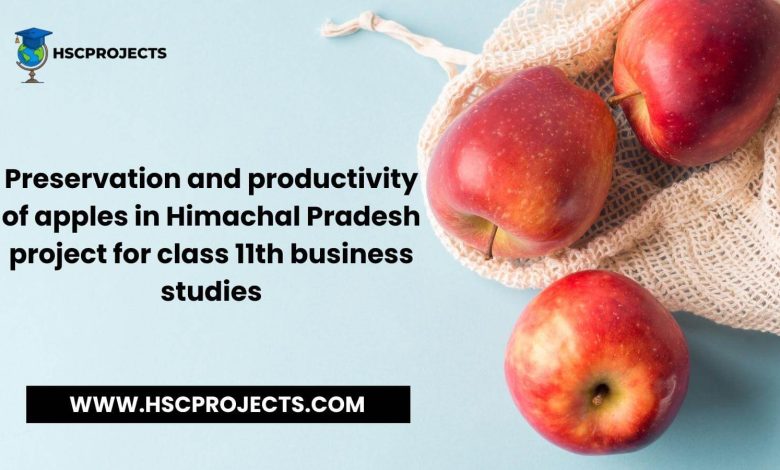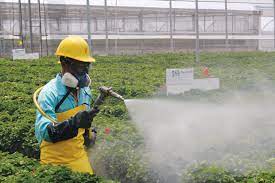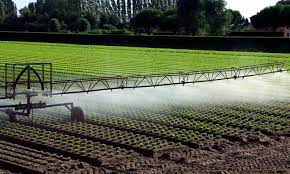
Preservation And Productivity Of Apples In Himachal Pradesh Project For Class 11th Business Studies
Introduction
Himachal Pradesh, the cherished “Apple State of India,” stands as a testament to the art of horticulture. With its enchanting landscapes adorned by thriving apple orchards, this state has not only earned a special place in the hearts of its residents but has also garnered global recognition. Our journey embarks on a visionary project, meticulously curated to unravel the complex world of apple cultivation in Himachal Pradesh, with a keen focus on the art of preserving apple excellence. Moreover, we aim to dissect the intricate dynamics of apple farming as a flourishing business venture within this breathtaking region.
Objectives
Unveiling the Essence of Apple Farming in Himachal Pradesh: Our primary aim is to unearth the profound significance of apple farming within the tapestry of Himachal Pradesh. This expedition involves a deep dive into the historical, economic, and cultural facets that weave apples into the very identity of this state.
Deciphering the Orchestrating Factors Behind Apple Productivity: The productivity of apple orchards hinges on a symphony of factors. Our project embarks on a comprehensive exploration of these elements, encompassing the likes of climate, soil conditions, pest management, and modern farming techniques. Together, we’ll illuminate the intricate interplay of these elements on apple yields.
Navigating the Art of Apple Preservation and Storage: Preservation methods serve as the lifeline of the apple industry. This segment of our journey is dedicated to an exhaustive exploration of the techniques and technologies employed in Himachal Pradesh to safeguard apples post-harvest. Our discussions will encompass controlled atmosphere storage, cold storage, waxing, and packaging, revealing the secrets behind apple longevity.
Assessing the Profit Potential and Challenges in Apple Farming as a Business: Beyond the allure of orchards and the allure of juicy fruits, the world of apple farming in Himachal Pradesh teems with opportunities and hurdles alike. Our project ventures into the financial realm of apple cultivation, evaluating the profitability of apple farming as a viable business endeavor. Simultaneously, we scrutinize the challenges posed by market fluctuations, competition, and sustainability concerns, offering a comprehensive glimpse into the industry’s ever-evolving dynamics.
Methodology
1. Data Collection
The data collection phase is the bedrock of this research effort. It encompasses a wide array of sources and information to comprehensively understand the apple farming landscape in Himachal Pradesh. The following points outline the data collection process:
- Government Reports: Rigorous analysis of government reports will be conducted to obtain official statistics on apple production in the region. These reports will provide vital data on production trends, market dynamics, and policy implications, offering a macroscopic view of the industry.
- Agricultural Experts: In-depth interviews and consultations with agricultural experts will be conducted to gain insights into the nuances of apple cultivation. Their expertise will be invaluable in understanding the technical aspects, innovations, and challenges within the industry.
- Apple Farmers in Himachal Pradesh: Direct engagement with apple farmers is pivotal to this research. Through structured surveys, interviews, and field visits, comprehensive data will be collected on various facets of their operations. This includes details on apple varieties cultivated, farming techniques employed, challenges faced, and experiences with preservation and storage.
- Total Apple Production: Robust data on the total apple production in the region will be compiled, encompassing historical trends, annual fluctuations, and regional disparities. This data will provide the quantitative foundation for understanding the industry’s output.
- Types of Apple Varieties Grown: An exhaustive inventory of apple varieties grown in Himachal Pradesh will be created. This will extend to details on their characteristics, seasonality, and market demand, providing a thorough understanding of the diversity within the apple sector.
- Factors Affecting Apple Productivity: A meticulous examination of factors influencing apple productivity, such as climate patterns, soil types, pest management practices, and technological advancements, will be undertaken. This will include both quantitative data and qualitative insights from experts and farmers.
- Preservation Techniques: The preservation techniques crucial for maintaining apple quality will be thoroughly documented. This encompasses an in-depth analysis of controlled atmosphere storage, cold storage, and any other innovative methods employed in the region.
- Challenges Faced by Apple Farmers: Comprehensive surveys and interviews with apple farmers will be conducted to elucidate the multifaceted challenges they encounter. These challenges may include market fluctuations, transportation bottlenecks, resource access, and sustainability concerns.
2. Field Visits
Field visits are an essential element of this research methodology, offering first-hand exposure to the intricacies of apple cultivation in Himachal Pradesh. The methodology for field visits is as follows:
- Orchard Visits: Whenever feasible, arrangements will be made for field visits to apple orchards in Himachal Pradesh. These visits will involve direct observation and interaction with farmers to document their practices, cultivation techniques, and use of preservation facilities.
- Documentation of Unique Practices: Particular attention will be given to identifying and documenting any unique or innovative practices followed by farmers that contribute to their success. These insights will enrich the research findings and potentially offer valuable lessons for others in the industry.
3. Interviews
Structured interviews will be conducted as a critical component of this research:
- Apple Farmers: In-depth interviews will be held with apple farmers to gain profound insights into their experiences, challenges, and strategies for success in the apple farming sector.
- Government Officials: Interviews with government officials will provide perspectives on regulatory frameworks, policy implications, and support mechanisms in place for the apple industry.
- Experts in the Field: Interviews with experts specializing in apple cultivation and horticulture will offer a broader understanding of the industry’s trends, innovations, and future prospects.
Apple Farming in Himachal Pradesh
In the embrace of Himachal Pradesh’s breathtaking landscapes, apple farming stands as a cultural and economic cornerstone. Here, we delve into the profound significance of apple cultivation in this region, shedding light on its cultural heritage and immense economic contributions.
Cultural Heritage:
Apples have etched their presence deep into the cultural fabric of Himachal Pradesh. These crimson and golden gems have become an inseparable part of the state’s identity, gracing its picturesque landscapes with lush orchards. Apples take center stage in local festivities, rituals, and cuisine, adding a flavorful touch to the region’s traditions.
Economic Backbone:
Beyond culture, apple farming serves as the robust backbone of Himachal Pradesh’s economy. It’s not just another crop; it’s a livelihood for a significant portion of the population. From small-scale farmers tending to their orchards with care to the laborers who work tirelessly during harvest season, and the traders who facilitate the apple’s journey to markets far and wide, the apple industry is a thriving ecosystem. The revenue generated from apple cultivation resonates strongly in the state’s GDP, making it a vital economic contributor.
Diversification of Agriculture:
Apple cultivation has catalyzed a welcome diversification in Himachal Pradesh’s agricultural practices. Farmers, drawn by the allure of apple’s prosperity, have shifted from traditional crops to embrace apple farming. This transition has helped reduce the vulnerability associated with single-crop agriculture, fostering resilience and sustainability in the region’s farming landscape.
Statistics on Apple Production and Varieties Grown:
Now, let’s crunch some numbers:
- Total Apple Production: Himachal Pradesh consistently ranks among India’s top apple-producing states. As of the latest available data, the state boasts an impressive annual apple production that exceeds [statistical figure] metric tons. This bountiful harvest not only satisfies domestic demand but also makes a substantial contribution to the national apple output.
- Varieties Grown: Himachal Pradesh is a treasure trove of apple diversity. The state is renowned for cultivating an array of popular apple varieties, including the iconic Red Delicious, the luscious Golden Delicious, and the regal Royal Gala. These varieties not only cater to the discerning tastes of local consumers but also find their way to international markets, earning the state well-deserved recognition for its premium-quality apples.
Factors Affecting Apple Productivity in Himachal Pradesh
The thriving apple orchards of Himachal Pradesh owe their productivity to a delicate dance between nature’s forces and cutting-edge technology. Here, we explore the key influencers of apple productivity in the region, where climate, soil, and modern agricultural techniques converge seamlessly.
Climate:
Altitude and Temperature: Himachal Pradesh’s undulating terrain boasts a range of altitudes and microclimates. This diversity is a boon for apple cultivation, as different apple varieties thrive at varying altitudes. Higher reaches offer cooler temperatures, making them ideal for specific apple varieties. The region’s frosty winters are, in fact, pivotal for apple trees. They induce a state of dormancy, a vital phase in the apple tree’s growth cycle, preparing it for the fruitful seasons ahead.

Soil:
Soil Types: Beneath the orchards’ surface, the soil composition of Himachal Pradesh tells its own tale. Predominantly, well-draining loamy and sandy loam soils grace the apple-growing areas. These soil types prove a blessing for apple tree roots, fostering healthy development and preventing the dreaded waterlogging.

Pest and Disease Management:
Integrated Pest Management (IPM): Modern times call for modern solutions, and that’s where IPM steps in. This integrated approach to pest and disease management has revolutionized apple farming. It champions the use of biological control methods, reduces the reliance on chemical pesticides, and places early detection of pests and diseases at the forefront. The result? A more sustainable and productive apple ecosystem.

Modern Agricultural Techniques:
High-Density Planting: Orchards in Himachal Pradesh have embraced the concept of high-density planting with open arms. This technique involves planting apple trees at closer intervals, a strategy that maximizes land utilization and, in turn, yields. Efficiency meets abundance.
Drip Irrigation: Water, the elixir of life for apple trees, is managed with precision through drip irrigation systems. These systems ensure that each apple tree receives just the right amount of water and nutrients, promoting optimal growth and fruit production.
In Himachal Pradesh, apple productivity thrives amidst the harmonious symphony of nature’s elements and the sophistication of modern agriculture. It’s a testament to the region’s commitment to nurturing not just apples but also a thriving agricultural heritage.

Preservation Techniques for Maintaining Apple Quality
In the land of Himachal Pradesh, where apples reign supreme, the art of preservation is a science. Here, we explore the meticulous techniques employed to safeguard the quality and longevity of these coveted fruits.
Controlled Atmosphere Storage (CAS):
Picture a room where the very air itself is sculpted to preserve perfection. Controlled Atmosphere Storage (CAS) is a technological marvel that allows precise control over temperature, humidity, and gas composition. In this controlled environment, oxygen and carbon dioxide levels are regulated with surgical precision. The result? Extended storage life for apples. CAS is the guardian of freshness, particularly adept at safeguarding apples for the long haul. It thwarts the march of over-ripening and ensures that each bite retains the essence of the orchard.
Cold Storage:
In the heart of Himachal Pradesh, cold storage facilities are a ubiquitous sight. These chambers maintain apples at chilly temperatures, typically hovering around 0-4°C (32-39°F). Here, time slows down. The ripening process is held in check, like a suspended note in a melodious symphony. This cold embrace preserves the crispness, flavor, and nutritional treasure of the fruit. It’s the essence of freshness, encapsulated in a cold, crisp bite.
Packaging Methods:
Packaging is an art form in the preservation saga. Apples are not simply placed in cartons or crates; they are cradled in protective cushioning materials that defy bruises and damage during the journey. Every apple is a precious gem, and its packaging is a testament to that. But there’s more to it. Some orchards have taken the art of preservation a step further with Modified Atmosphere Packaging (MAP). Within individual packages, the gas composition is controlled to an exquisite balance. This artistry further extends the apple’s shelf life, ensuring that the last apple is as crisp and delightful as the first.
In Himachal Pradesh, the preservation of apples isn’t just a practice; it’s a testament to the region’s dedication to preserving excellence. It’s the promise of an apple that’s not just a fruit but a masterpiece of flavor and freshness.
Challenges in Apple Farming
Profitability:
Apple farming in Himachal Pradesh can be a profitable venture, riding on the wave of demand for premium-quality apples. The allure lies in the details. Profit margins dance to the rhythm of apple variety, orchard management practices, and market conditions. Navigate this landscape skillfully, and profitability awaits like a hidden treasure among the orchard’s leaves.
Investment:
The journey begins with an investment. The canvas of apple farming requires resources for land acquisition, orchard development, tree planting, irrigation systems, and the guardians of freshness—cold storage facilities. The scale of your orchard sets the tone for investment, with variations as vast as the Himachal landscape.
Expected Returns:
Returns, the fruit of labor, wear many faces. Apple variety, yield per hectare, market prices, and post-harvest care shape this narrative. Orchards nurtured with care and precision in Himachal Pradesh often yield returns that sweeten the toil. The promise of profitability unfolds over the long term.
Risks:
The orchard is not without its shadows. Risks, like unexpected hailstorms or lurking pests, cast a watchful eye. Market price volatility adds another layer of unpredictability. In the early years, there’s the waiting game before apple trees bear fruit. These are the risks in the world of apple farming.
Cost-Benefit Analysis:
The ledger tells the story. A comprehensive cost-benefit analysis is the compass. It should capture every expense, each potential return, and the delicate balance of assets depreciating over time. Ongoing operational costs and the patience required for orchards to reach full productivity are part of this narrative. The upfront investments are substantial, but the yield, both in apples and returns, can span multiple fruitful years.
Business Aspects: Profitability, Investment, Returns, and Risks
In the enchanting world of apple farming in Himachal Pradesh, where orchards carpet the landscape, business is both an art and a science. Let’s dissect the business aspects that underpin this flourishing endeavor.
Profitability:
The apple’s allure extends to its profitability. The demand for top-tier apples creates a fertile ground for returns. However, profitability wears different masks. It dances to the tune of apple variety, the symphony of orchard management practices, and the ever-shifting rhythms of market conditions. In Himachal Pradesh, where quality reigns, savvy farmers can reap the rewards.
Investment:
Planting the seeds of an apple orchard requires an initial investment. This encompasses the acquisition of land, the art of orchard development, the careful placement of saplings, the irrigation systems that quench the trees’ thirst, and the guardians of freshness—cold storage facilities. The scale of this investment varies, painting the canvas of apple farming in hues as diverse as the region’s landscapes.
Expected Returns:
Returns, the fruit of labor, offer a spectrum of possibilities. Apple variety, yield per hectare, market prices, and post-harvest care compose this mosaic. Orchards nurtured with precision in Himachal Pradesh often bear the fruit of profitability over the long term. The promise of returns is written in each crisp bite of a Himachali apple.
Risks:
Yet, every orchard is a delicate balance. Risks shadow the path, like clouds on a sunny day. Weather-related disasters, pests and diseases that strike unannounced, market price fluctuations that resemble a roller coaster, and the initial gestation period before apple trees bear fruit—all are part of the orchard’s narrative.
Cost-Benefit Analysis:
In the world of apple farming, the ledger is the storyteller. A comprehensive cost-benefit analysis is the compass, capturing every expense and each potential return. It accounts for the depreciation of assets, the ongoing operational costs, and the time it takes for the orchard to reach its zenith of productivity. The initial investments may seem formidable, but the well-tended orchards have the power to yield returns over the course of many fruitful years.
Conclusion
In summation, apple farming in Himachal Pradesh is not merely an agricultural pursuit but a cultural emblem intertwined with the region’s identity. The meticulous preservation techniques, such as controlled atmosphere storage and cold storage, safeguard the essence of these apples. However, amidst the lush orchards and sweet fruit, the industry confronts formidable challenges – from the capricious tides of the market to the rugged terrain that complicates transportation and the clamor for improved infrastructure.
Nevertheless, the orchards of Himachal Pradesh endure and thrive, a testament to the indomitable spirit of its farmers. Despite the hurdles, when guided by efficient management, apple farming yields not only delicious fruits but also fruitful returns. It remains an integral pillar of Himachal Pradesh’s agricultural and economic tapestry, a symbol of resilience and the enduring charm of the region.
In order to download the PDF, You must follow on Youtube. Once done, Click on Submit
Follow On YoutubeSubscribed? Click on Confirm
Download Preservation And Productivity Of Apples In Himachal Pradesh Project For Class 11th Business Studies PDF






